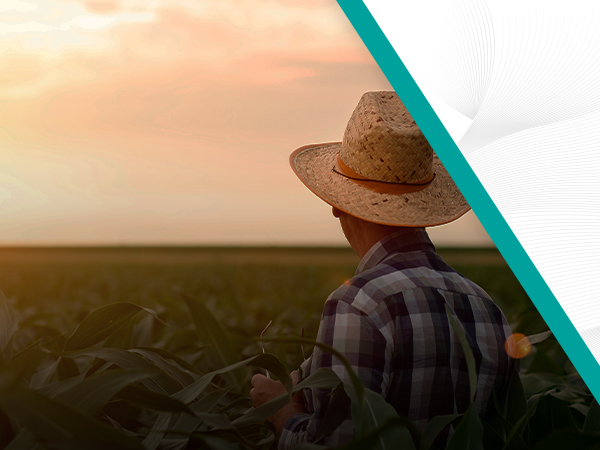Keep an Eye Out: New Trends in the AG Industry 2023 is rolling to an end, but industry advancements and changes remain …


Agriculture is one of the oldest industries in human history and became the basis for societal growth and the switch from the hunter- gatherer, nomad lifestyle of our early ancestors to develop settlements and establishing sedentary communities, starting around 12.000 BC.
Agriculture in the United States has a long and rich history that spans several centuries. Long before European colonization, Indigenous peoples had already developed diverse and sophisticated agricultural systems. These included practices such as crop rotation, fertilization, irrigation, and terracing; as well as the domestication of plants like maize, beans, and squash. These practices supported complex societies and provided a stable food supply.
In the 17th and 18th century the early European settlers severely impacted the Native’s agricultural practices, and they introduced new techniques and crops, such as wheat, barley, and cattle. During the 19th century the American agriculture underwent significant changes with the expansion of the country’s western frontier, the growth of commercial agriculture, and the rise of new technologies such as the plow and the mechanical reaper. This period also saw the emergence of large-scale agribusiness, which led to the concentration of farmland ownership.
The 20th century brought about the Green Revolution and, with it, advances in agricultural technology and practices, including the use of synthetic fertilizers, pesticides, and herbicides, and the widespread adoption of mechanization. This led to significant increases in crop yields and productivity, but also brought with it new challenges directly spanned from the environmental and labor impact. This period also faced the introduction of new crops, such as soybeans and corn, which became important components of the American diet.
There is still so much to learn and much more to explore – but what is truth, and what is myth? What interesting things can history teach us about this industry? And what assumptions do we have today that still influence the way we look at it?
- “Agriculture is a hands-on, low-tech business”
- Yes and no. Many farmers still like to get their hands dirty with field work, and some manual operations are still present, especially in smaller farms. However, as we have seen in past blogs, agricultural technology has advanced at an amazing pace, incorporating complex IT solutions, automation, and monitoring, among other smart solutions, to become more efficient and cost- effective.
- “Agriculture is all about food”
- Yes, a large portion of the agricultural business is dedicated to producing food, but there are many food derivates that become the basis for other products that are part of our daily lives. Lip balms, crayons, charcoal, fibers, candles – and even paint – are all byproducts that come from soybeans, corn and others that are harvested in fields all around the world.
- “GMOs are not healthy”
- GMOs, or Genetically Modified Crops have a bad reputation of being unhealthy and harmful for humans and the environment. Although the debate is still up, and much needs to be regulated, seeds of this kind are strictly monitored for consumption and have allowed crops to thrive and withstand external circumstances that otherwise would have killed them. Additionally, selective crop breeding is a practice that has been present in agricultural history since its inception and it has allowed improvement of resources in resistance and taste, among other qualities.
- “Agriculture has a single, localized origin”
- Agriculture was born in several places, at various times in early human history. Although research has focalized early farmers around the Fertile Crescent in the Middle East, several tribes that had no contact with each other did in fact have agricultural practices. Settlers in other regions, such as Europe and America, began cultivating and domesticating different crops independently.
- “Organic food is expensive”
- We may find expensive items in supermarkets, but, in reality, organic food prices are not much different from conventional food. Purchasing directly from farmers would be a great alternative to not only get fresher produce at better prices, but to support communities and small, family owned farms who actually comprise the largest portion of food producers in the US.
- “Modern agriculture is not sustainable or environmentally friendly”
- Farmers are steadily transitioning towards —or maintaining—sustainable practices on their farms. With the aid of technology, farms are integrating solutions that help with soil degradation, water distribution, pesticides and fertilizers impact, and general carbon emissions, all with the aim of providing products that are as healthy to consume as they are produced. Agricultural lands are also being used for conservation and renewable energy production.
VICOSITY’s quality remains a fact!
RELATED ARTICLES
Harvesting Success: Crop Rotation and Cover Crops Crop rotation and the use of cover crops are key tools for sustainable farming practices …

